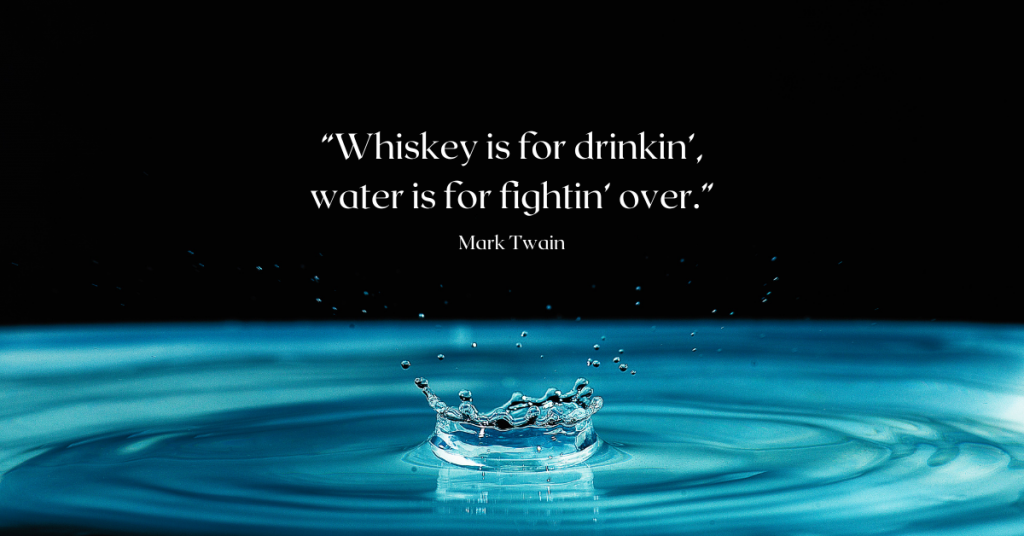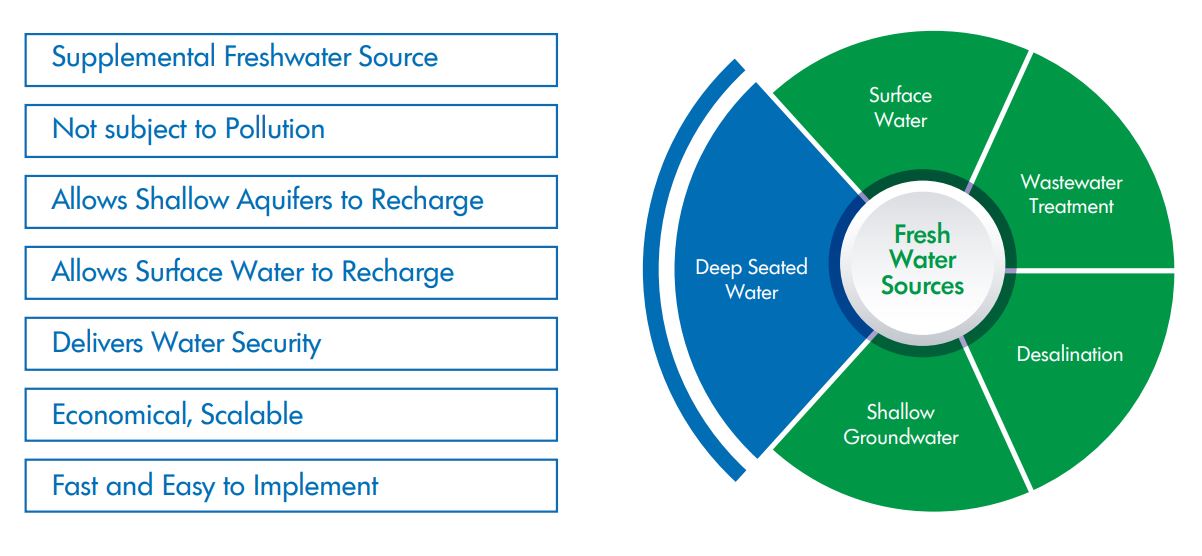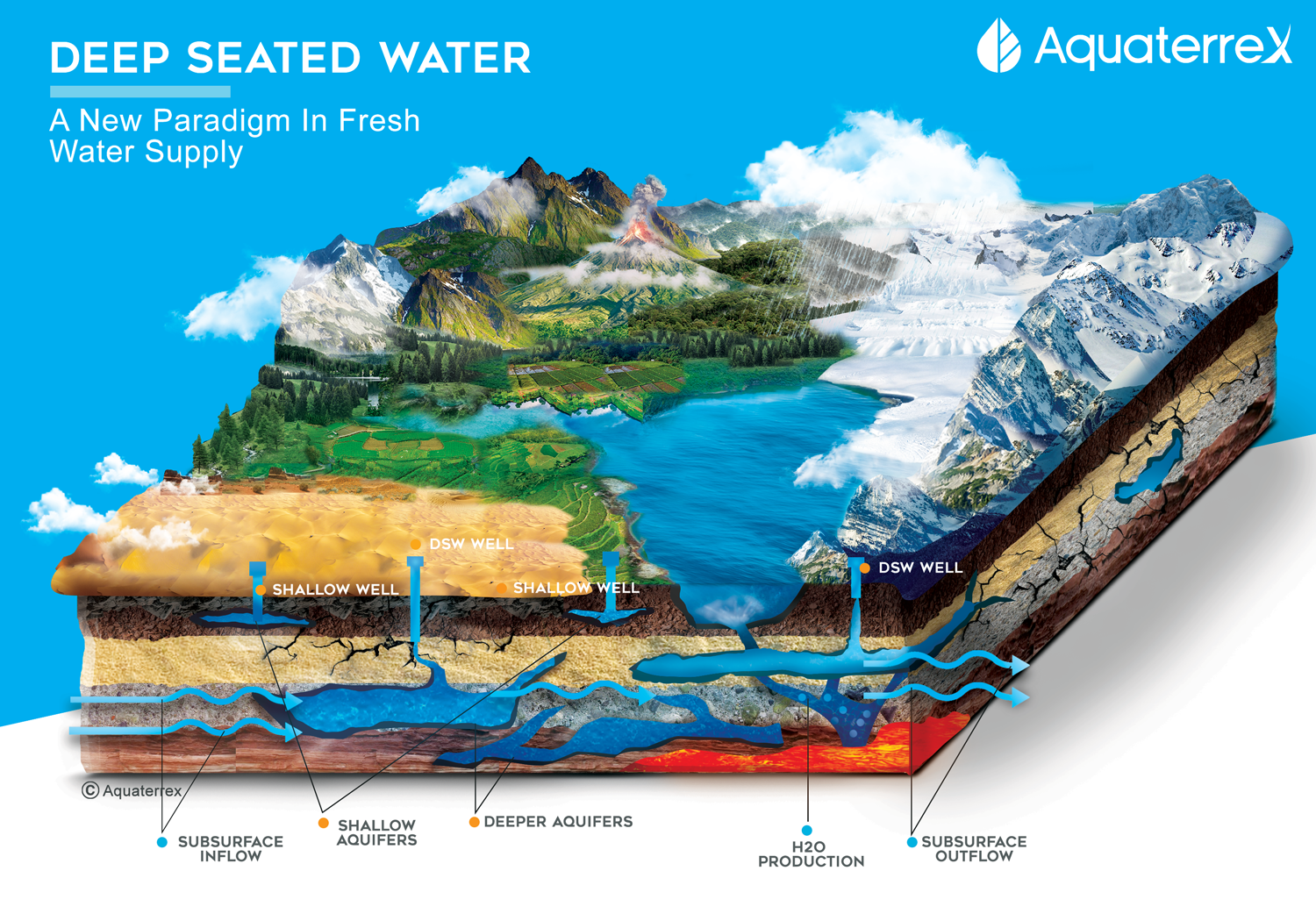
“Whiskey is for Drinkin’, Water is For Fightin’ Over” – Arizona City Cuts Off Water to Community Amidst Drought
“Whiskey is for drinkin’, water is for fightin’ over.” This phrase has been linked to the famous American writer, Samuel Clemens, known as Mark Twain, from the late 1800s. Whether or not Clemens wrote or spoke those words, they are as true today as they were 150 years ago.
The City of Scottsdale, adjacent to Phoenix, recently turned off the water tap to the community of Rio Verde Foothills, an unincorporated area of about 2,000 homes just outside the city limits. Now the residents must rely on trucks to haul in water to sustain them. The reason for the cutoff is that Scottsdale and nearly all of Maricopa County receive their water from the dwindling supplies of the Colorado River. Granted, Scottsdale warned Rio Verde a year ago they could face a cutoff, but none of the negotiations or proposals have met success, and the residents have been left high and dry, with water prices tripling. Arizona water cutoff
It’s not just the historic drought that is causing this problem for the Southwest US (and many other places around the world), it is the management of water resources that creates problems down the road. The unbridled expansion of water-hungry communities and the attraction of industries that consume incredible amounts of water. For example, an average computing data center can use 300,000 gallons of water a day to cool the facility – the same amount used by 100,000 homes according to researchers at Virginia Tech. But that pales in comparison to semiconductor manufacturing, which averages 2,000,000 to 4,000,000 gallons per day, according to Sustainalytics. And tech companies are aggressively expanding chip manufacturing in the U.S., especially in the arid West.
Cities Need Better Water Planning and More Options
In spite of the huge rainfall recently pummeling the West Coast, the drought cycle will continue, according to long-range weather forecasters at the Center for Climate Science at U.C.L.A. in California. Will the Rains in California End the Drought?
As we’ve reported time and again, there is a vast supplemental source of fresh water available, and it’s right below our feet. The US National Groundwater Association estimates there are 6,000 years of global water supply in the upper two kilometers of the earth’s crust. It is now available economically and quickly through AquaterreX’s combination of space-based technology, geospatial data, and patented instrumentation. We are proud to be helping solve the water crisis facing billions of people.
Deep Seated Water Should Be Added to the Mix Now
Deep Seated Water (DSW), is groundwater, typically sourced from deep aquifers that are located lower than shallow aquifers. Such deep aquifers are supplied not only from local catchment basins but also by subsurface inflows across basin boundaries. Deep Seated Water also encompasses water created at the mantle level of the Earth under extreme heat and pressure as confirmed by this report on mantle rain. Contamination does not occur in these deep water aquifers as modern pollution has not reached these deeper levels. And the best news is that this water is accessible and plentiful.
Deep Seated Water fits the environmental sustainability model as it would supply vast amounts of fresh water to regions while also allowing the existing sources to replenish. It is the “Missing Piece” that can solve the water crisis puzzle. The good news is, Deep Seated Water is a source that can supply the needs of the planet for thousands of years.
An example of huge new sources of fresh groundwater being discovered came within the last year in Texas. The newly named Maverick Basin Aquifer is known to be at least 3,000 square miles and averages 1,000 feet thick in most places. This comes years after Texas water experts concluded their deeper aquifers are brackish (salty) at best. Water tests on this new aquifer show it comes out of the ground already meeting or exceeding federal and state drinking water standards! Deep aquifer (texas.gov) These discoveries fly in the face of the commonly accepted beliefs of most hydrogeology professionals.
We Can Solve the Water Crisis Now
AquaterreX has been at the forefront of this effort, employing 21st-century technology to locate Deep Seated Water.
Deep Seated Water – The Missing Piece
Deep Seated Water is the Missing Piece that can solve the water crisis puzzle – contamination, drought, scarcity – for states, cities, municipalities, agriculture, and industry. Many water strategies focus on conservation, rather than additional supply. Other solutions such as desalination and wastewater treatment are potential answers for some, but they also come with trade-offs such as high cost, high energy usage, long planning periods, and toxic waste. Deep Seated Water is located almost everywhere on the planet, and it can be added to the mix of solutions as a supplemental freshwater source that is not subject to contamination, is fast and easy to implement, and is economical and scalable. And, tapping Deep Seated Water allows both surface water and shallow aquifer sources to recharge, making the total system more environmentally sustainable.
About AquaterreX
AquaterreX (www.aquaterrex.com) is a global environmental services organization with a mission to broadly implement effective water and food security solutions. AquaterreX maintains offices in Florida, California, and Australia, and has representation in the United Arab Emirates. The name AquaterreX comes from the Latin, aqua (water) and French, terre (earth, land) which is a derivative of the Latin, terra, and “X” for exploration. Thus, AquaterreX encompasses water and land solutions for the planet.
The company possesses proprietary technology to locate Deep Seated Water, which is fresh water situated below the shallow groundwater that supplies the majority of fresh water on the planet. This vast new source of water can help solve the water crisis facing billions of people.
